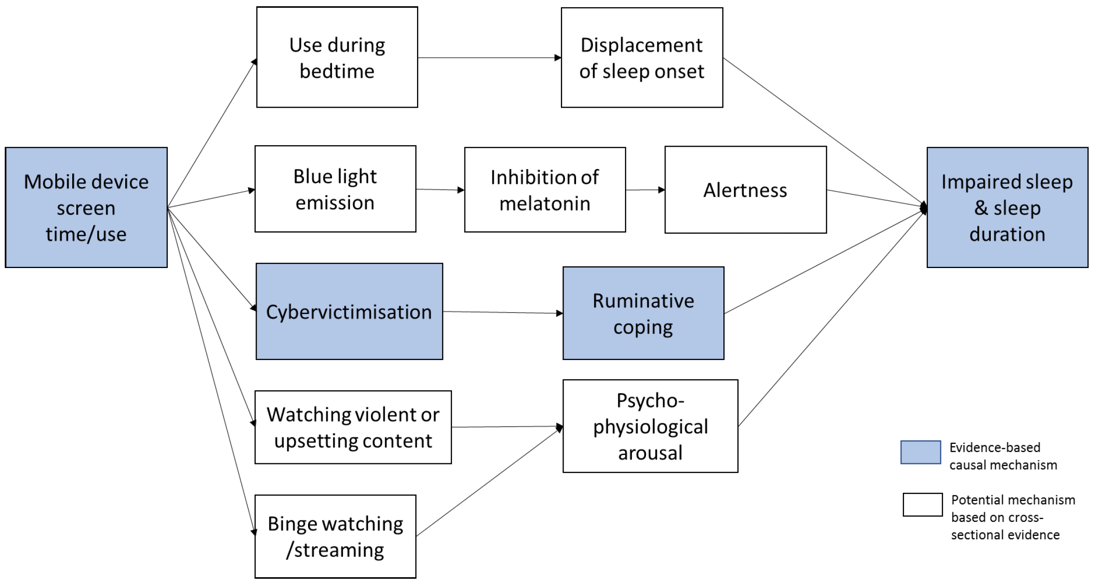Adolescents' screen time, sleep and mental health: literature review
Systematic review summarising the published experimental and longitudinal evidence on adolescent screen time, sleep and mental health.
Research Question 2: What are the potential causal mechanisms through which mobile device screen time/use affects sleep outcomes amongst adolescents?
Of the studies eligible for inclusion in this systematic review, only one study Jose et al (18) provided suitable data to explore potential causal mechanisms through which mobile device exposure influences sleep outcomes. This study was also included for answering RQ1 and the quality assessment is shown in Table 1 (the study was better quality).
Jose et al (18) investigated the mediating role of ruminative coping (i.e. repetitively thinking and obsessing about distressing thoughts, emotions, and memories) and problem solving in the longitudinal association between cybervictimisation and getting at least 8 hours of sleep per night (i.e. sleep adequacy) in 2179 adolescents aged 10-15 years from New Zealand. Study characteristics, and description of assessment of cybervictimisation and sleep adequacy are shown in Appendix Table E. Ruminative coping was established using four rumination items from an existing scale (26). Adolescents were asked to indicate their agreement with, for example, ''I think I must have serious problems otherwise I wouldn't feel this way". Problem solving was assessed with three items adapted from the scale (e.g. ''I try to change the situation to fix the problem'').
The authors indicated the following findings with regards to ruminative coping:
"Cybervictimisation predicted a decrease in sleep adequacy one year later through the mediating role of rumination: i.e. cybervictimisation predicted an increase in rumination and this increase, in turn, predicted a diminishment of sleep adequacy". (p. 131)
In contrast, poorer ability to solve problems was not a factor that explained the link between cybervictimisation and poor sleep adequacy.
The lack of longitudinal data limits the extent to which we can answer RQ2. However, there are a few other plausible hypotheses as to how mobile device screen time or use is linked to poor sleep outcomes among adolescents, and a combination of factors is likely to be at play (see Figure 4). It should be noted that additionally reviewed studies (5, 27-32) are not longitudinal and while included in Figure 4 as supplementary for answering RQ2, they only give an idea of potential mechanisms on the pathway between screen time and sleep. Further longitudinal research is required to understand the extent to which these potential mechanisms can be evidenced.
Figure 4. Potential causal pathways between mobile device screen time/use and impaired sleep

Contact
Email: socialresearch@gov.scot
There is a problem
Thanks for your feedback